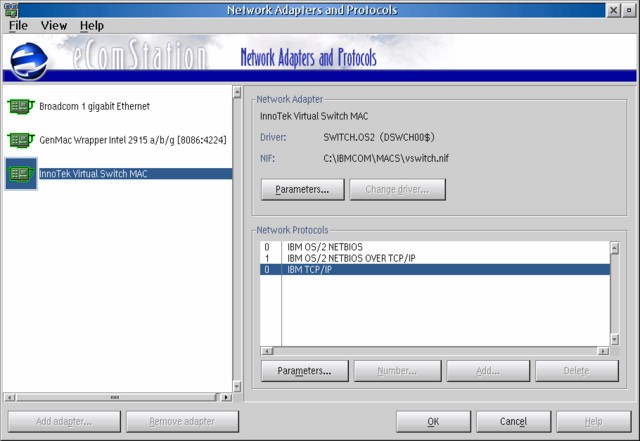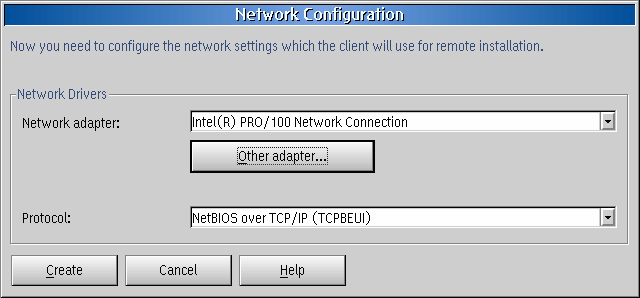|
|

|
AD: Upgrade ArcaOS to NeoWPS level
- Install original PNG icons drawed by designer, specialized at OS/2 adornation.
- Install eSchemes 2019 to change colors and buttons on desktop.
|
Interview with Alex Taylor |
TITLE: Interview with Alex Taylor
DATE: 2010-07-04 14:24:20
AUTHOR: eCo Software
When did you start to use IBM OS/2 Warp? Why did it attract your attention?
I started to play with OS/2 around the fall of 1996.

|
Up until 1996, I'd used mostly DOS. For years, I knew OS/2 was the
successor to DOS, and was supposedly much, much better (although I'd never
actually seen it). I was therefore very confused when, around 1995, the
media suddenly started touting Windows 95 as "the successor to DOS". I
didn't know about the IBM-MS feud at that time, of course.
|
So I already thought Windows 95 was redundant. When I actually got my
first look it, I was completely disgusted. It was clumsy, frustrating, and
badly-designed. Even worse, it was patronizing and controlling from top to
bottom. I promised myself I would never, ever use it on any computer of
mine.
As far as a successor to DOS was concerned, OS/2 had come along first, and
was better by almost every measure I'd heard. So I decided to try it out
when I got the chance.
At the time, I was a computer science major in university. I didn't have
the budget for OS/2, even if any local store had sold it. At the same time
(early 1996), Linux was starting to take off. I had to use Linux in my
course work, and after a while I installed a copy onto a spare partition on
my 486 PC.
Linux was great for programming and learning, but I still wanted something
I could use comfortably for day-to-day work and play. And DOS was getting
pretty long in the tooth by this point. Meanwhile, a friend of mine from
back home got OS/2 Warp 4, and showed it off to me during vacation.
That fall, I took a part-time job in the university computing services
department. One of my co-workers happened to have a copy of OS/2 Warp 3
which he'd won some years ago in a trade show, and had no use for. So he
gave it to me, and I installed it on my increasingly-crowded PC (alongside
both DOS and Linux).
I have to confess, I didn't exactly fall in love at first sight. The
Workplace Shell was completely alien to me, and I found many parts of the
system confusing. For the next year or so, I ran both OS/2 and Linux side
by side on my computer, and in actual fact I probably used Linux more.
Still, the more I used OS/2, the more I came to like it.
After I finished university, my knowledge of OS/2 got me a job as
(basically) an assistant network administrator/support technician for an
large insurance company's OS/2 LAN Server network. My knowledge of (and
comfort with) OS/2 grew exponentially during that time.
Also, as time went by, I gradually became more and more disillusioned with
Linux. It was still a great system for servers, developers, and
enthusiasts. But I realized it was far too fragmented and disorganized
(both technically and philosophically) to move effectively into the
consumer space. I also didn't like some of the specific ways in which it
was trying to popularize itself.
I finally bought a copy of Warp 4 in 1998, installed it on my new (P-II)
PC, and was a whole-hearted OS/2 user from that point onward.
How do you use eComStation? Which applications do you recommend?
Well, for Internet use, I guess the programs I use most often are SeaMonkey
for web browsing and IRC, PMMail for e-mail, and ProNews/2 for newsgroups.
For graphics, I use the GIMP (in combination with HobLink X11), as well as
PMView Pro for viewing/managing images and Cameraderie for getting photos
off my digital camera.
I don't have to work with formatted documents much these days (I don't
require it for my job at the moment), but when I do, OpenOffice.org is great.
For programming, I mostly use the great MED text editor (formerly known as Mr. ED).
Other programs I find indispensible include NetDrive, Character Map/2,
eAccounts for managing passwords and similar things, and (since it became
available in the last few months), QBitTorrent.
How to increase the population of eComStation users today?
Well, first of all I know Mensys wants to get an updated DemoCD for
eComStation 2.0 released. That should help a lot. It's a fair bit of
work, though, and they're pretty busy these days...
Other than that, we need two things: GUI improvements and applications. I
already mentioned where I think we need to focus our development on those
fronts.
Working on to replacing some of the old and aggravating configuration tools
included with eComStation would also be a big help. MPTS, for example, is
a constant source of headaches.
And, we need to improve our interoperability with other networked systems
and devices. Getting Samba improved is important; the same goes for CUPS.
Even if you're not a developer, you can help test or provide feedback.
Nothing kills a project faster than a lack of feedback from users!
What to add to eComStation to make it "sexy"? New PM controls or some friendly applications?
We're not doing too badly for applications these days, actually. If
there's one major gap, it's good support for mobile devices like the iPod
and BlackBerry and their relatives. I don't know exactly where the future
of computing lies, but I'm pretty sure that mobile devices are going to
figure prominently in it.
But the biggest thing I want to see are some more modern and capable PM
controls. Environments like QT are fine, but you have to write the entire
program in them from the start. We need good PM controls to modernize
existing applications, as well as to appeal to programmers who are
comfortable with PM.
The biggest thing we need on that front is a modern MLE control which
supports Unicode (and possibly some level of rich text formatting as well),
which could be dropped into existing applications like PMMail or AE without
much difficulty.
Number two on the list (for me personally) would be a more intelligent
container control with fully-resizable columns (something like what ProNews
uses, although more general-purpose).
What are you developing for eComStation now?
Various different things. I'm responsible for maintaining several system
components, and I'm continually working to improve them. That takes up a
lot of my time.
I also continue to work on the various applications I've written which
aren't specifically part of eComStation.
I'm continuing to develop my fonts, in particular Workplace Sans (I hope to
have a new release ready fairly soon).
If you want to know about new projects specific to eComStation which I'm
working on... I have a few ideas that I'm playing around with, but they're
nowhere close to being ready yet. (And I can't actually guarantee that
they ever will be.)
For instance, I mentioned the old, archaic MPTS configuration GUI. I'm
currently looking at ways to replace it with something a bit friendlier and
more maintainable. I've put a reasonably functional prototype together,
although if I ever develop it into a finished product it won't necessarily
look like what I have now.

I also want to write a new tool for booting the eComStation install CD
remotely over the network. This is based on something that I actually had
working (and on the BetaZone) for eCS 1.2 English, although it's being
quite radically redesigned.

Is it possible make eComStation switch languages without
re-installing the system?
Well, not totally. In theory, if we could isolate all the language-
specific resources and message files, it might be possible to switch at
least the desktop (PM+WPS) language by replacing the resources. A kind of
"super Dialog Enhancer", if you like. It would be quite a lot of work to
implement such a thing, though.
And it would only work for SBCS languages. For DBCS languages, in addition
to the above, you would need to replace some very low-level system files
and do a lot of very complex reconfiguration. It may not be technically
impossible -- very little is actually impossible, if you have the time, the
skills, and the resources -- but personally, I can't see it happening.
How to improve the situation with fonts in eComStation?
Well, there are more applications these days which use the FreeType library
instead of native OS/2 functions for drawing text. This provides very
attractive anti-aliased fonts. The disadvantage is that each application
has to support it specifically (unless you use a special environment like QT4).
I've also been looking recently at updating the old FreeType/2 installable
font driver for Presentation Manager. I've just released new version which
improves the Unicode support and also makes the use of DBCS fonts a little
easier. But this version is still based on the same version (1.3) of the
FreeType library. What I want to do next is write a new version based on
FreeType version 2. If done right, that could bring us OpenType font
support, as well as improved rendering for Type 1 fonts. None of this,
unfortunately, makes antialiased text possible under Presentation Manager,
but it certainly broadens our options.
As far as creating new fonts goes... it's still true that you need some
pretty specialized tools to do this. I use a commercial product called
FontLab TypeTool, which is flexible and easy to use. Unfortunately, it has
its limitations, chief among which is very limited support for hinting.
The main open source product for font design is FontForge, which is
extremely powerful. I actually took a look at porting it to OS/2, once.
The underlying engine actually compiles on OS/2 quite easily, but the GUI
is more of a problem. Unfortunately, it doesn't use a ported library like
QT, but relies on its own custom widget set which runs on X11. Porting it
to OS/2 might be possible by linking against the XFree86 libraries, but
that would mean running the program under an X server (the way we have to
do with The GIMP).
It's actually quite easy to create a font, given the tools. Creating a
GOOD font is something else entirely. The more I study this topic, the
more I realize just how little I understand.
How to start development of applications for eCS? Which resources
and documents do you recommend for novice developers?
That's a tricky question, because I've never really found a satisfactory
answer for myself. I did my early learning with Blake Watson's "OS/2 Warp
Programming for Dummies", which got me started, but in retrospect it's
pretty limited. Since then, I've mostly just relied on the documentation
in the IBM toolkit... and a lot of experimentation.
I know a lot of people swear by Charles Petzold, but I've never been able
to find any of his books (they're long out of print at this point) so I
can't say what they're like.
It doesn't help that I'm not actually a very good programmer. My areas of
interest in university were collaborative development and user interface
design... not so much actual programming. That's why most of the programs
I write tend to be simple, single-task utilities... that's what I know how
to do.
So I guess my advice for novice developers would be: start with what you
know. Then try to extend it little by little by playing around. There are
lots of useful things you can do that don't require a huge amount of skill
or effort. Just use your imagination. ;)
It seems that you like japanese culture. Tell us, what did you find
in this culture during this year?

|
I've recently become very fond of sumo wrestling. It's such a simple sport,
but so different from anything we have in the West. I suppose there's some
special appeal in the fact that the top athletes are all large, overweight
guys who love their food and drink!
|
Additional information:
|
Test the program:
|
 eCo Tunes - internet radio client. Listen to music of any genre, stations all over the world.
eCo Tunes - internet radio client. Listen to music of any genre, stations all over the world.
|
Comments: Joachim 
2010-07-07 01:56:32 | Very nice interview,
thanks Alex and Eugene!
Regards,
Joachim
| Mike O'Connor 
2010-07-07 12:56:51 | Really excellent interview - Alex & Eugene!
We need more of this quality!
I always visualized Alex as a fair bit older!
i wish I was his age not 40-odd years older.
Thanks for your sterling work for the eCS Community Alex! | JT CaptKirk 
2010-07-07 15:45:15 | Nice article. The prototype for MPTS actually looks pretty good. You ought to pursue it. After using the IBM version all this time, the only risk you have is actually improving it.
Like you, I favored OS/2 before I actually owned a copy. It was quite expensive being over 249.00 USD. But when IBM dropped the price to the 60.00 USD range by introducing Warp for Windows v2.1 someone bought me a copy as a Christmas present. After I installed it (in dual boot mode) I was hooked. After using the WPS for about a week it was second nature although I was still an OS/2 novice.
I could never look at any version of M$ Windows the same way. Even after using Linux with GNOME OS/2-ECS is in a different league of its own.
I wish you much success in all the OS/2-ECS projects you are working on. | Mike Snyder 
2010-07-09 23:56:21 | Great to hear from two people who've contributed so much to making eCS a success. Fascinating perspective, Alex, although I don't find MPTS too bad. Keep up the great work, please. | Dariusz Piatkowski 
2010-07-16 04:26:57 | Great article!
I believe Alex is a graduate of the University of Guelph, my school as well. I have been a fan of OS/2 from way back, circa about 1994/5, used to run it while I was still in school, with a couple of other guys in the IS department.
Some great ideas in the article, a modern set of PM controls would sure be nice.
At the OS level I wish we had support for modern multi-core CPUs (AMD in particular which are quite affordable to the masses).
| Ralph Balzac 
2010-09-29 01:26:02 | Alex,
Glad you are with the ecs community. Keep up the good work. |
Comment this article.

|
eComStation 2.0 is ready for ACPI computers. The operating system was modified (during 3 years) to support new PC computers (various drivers were updated, the parameters of the system were changed) eCS 2.0 what's new |
|
|





